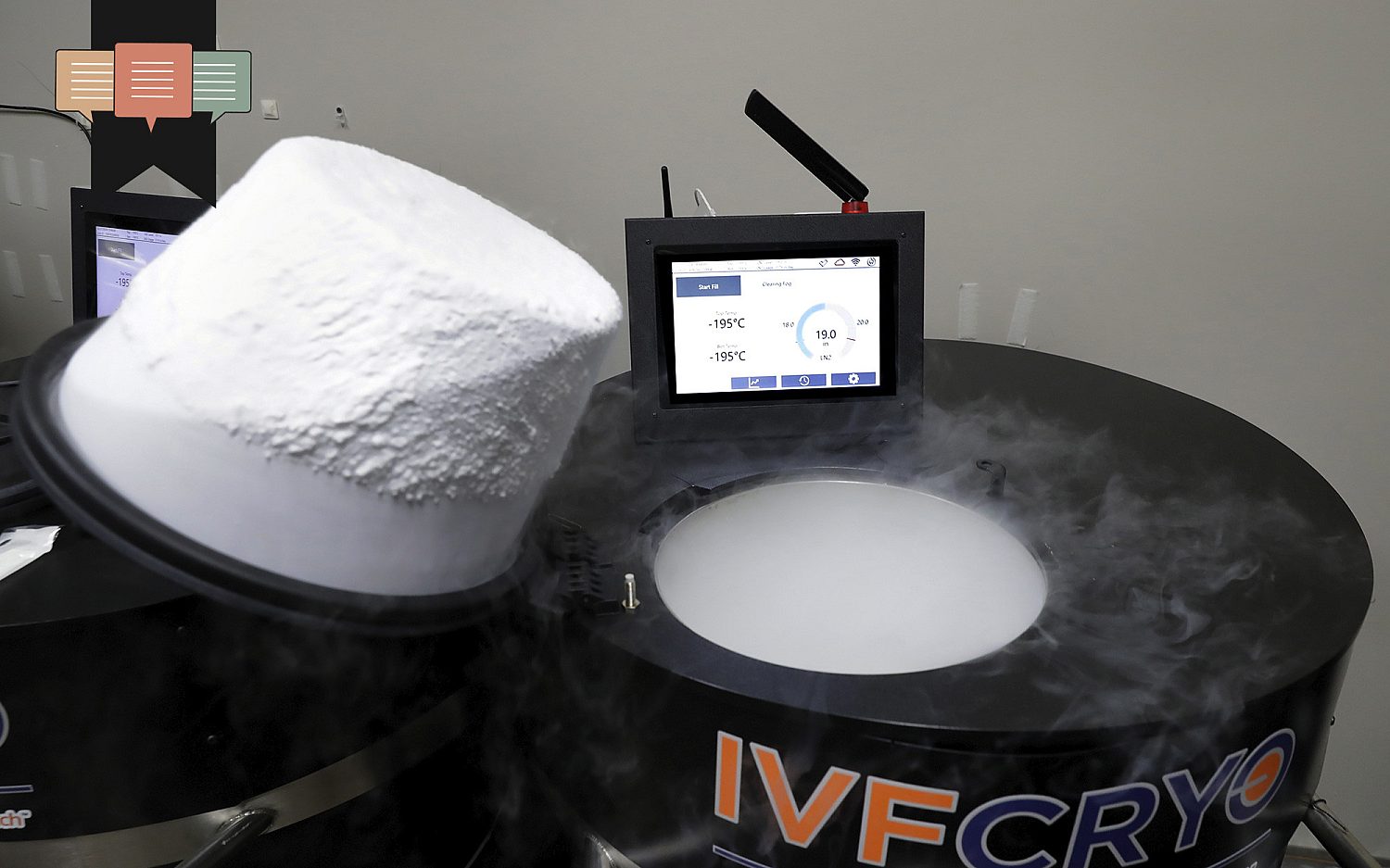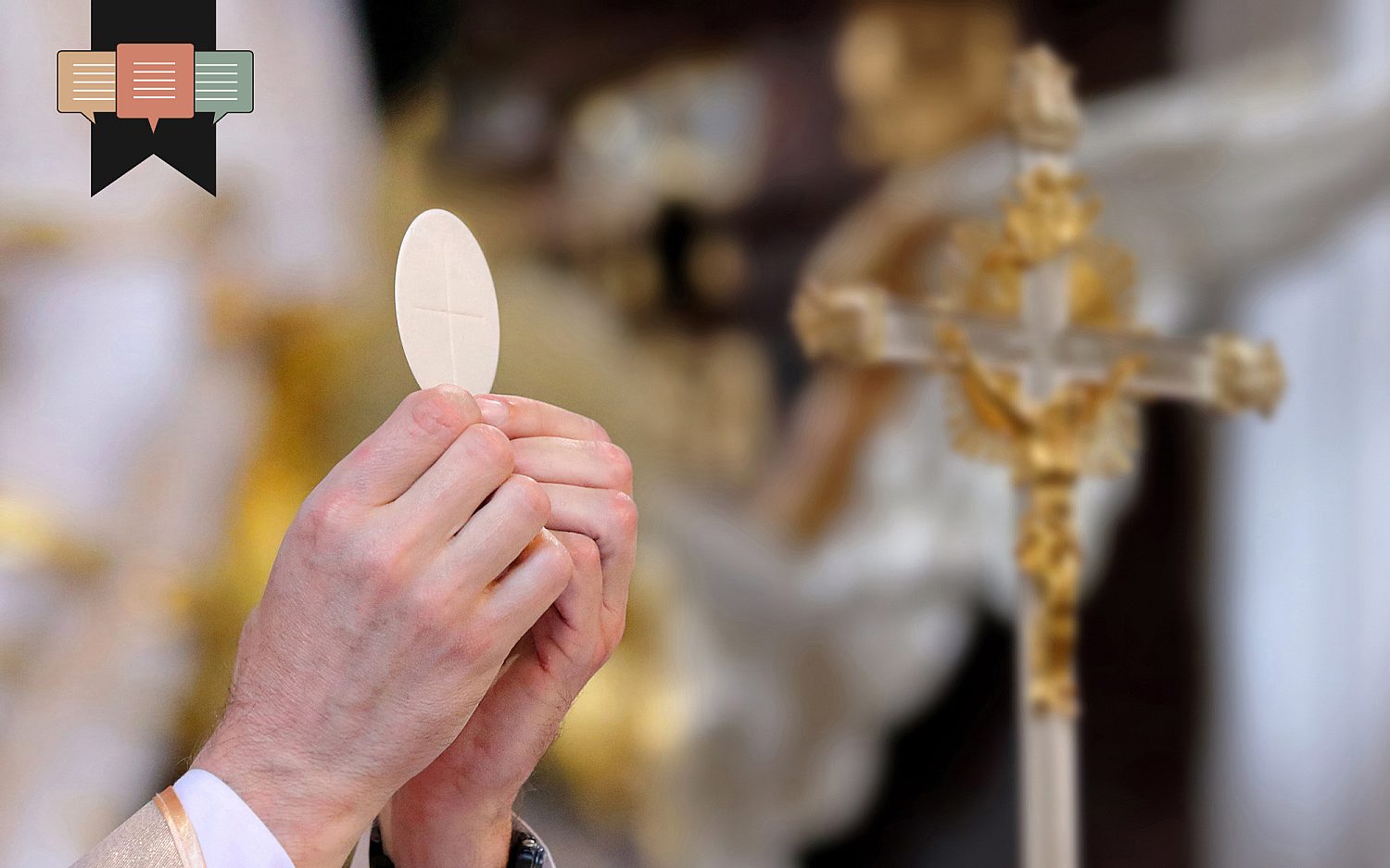Millions on ice
The “world’s oldest baby” is one of the few frozen embryos to get the life they all deserve
A large capacity storage container stands open at the Aspire Houston Fertility Institute in vitro fertilization lab in Houston. Associated Press / Photo by Michael Wyke

Full access isn’t far.
We can’t release more of our sound journalism without a subscription, but we can make it easy for you to come aboard.
Get started for as low as $3.99 per month.
Current WORLD subscribers can log in to access content. Just go to "SIGN IN" at the top right.
LET'S GOAlready a member? Sign in.
A child created in 1994 finally got his chance to be born. Frozen more than 31 years ago when his biological mother’s IVF treatment produced multiple embryos, there was no guarantee he’d ever receive a family. This is the fate for most of the millions of “frozen orphans” in cryostorage tanks around the country.
The life of baby Thaddeus, now dubbed the “World’s Oldest Baby,” is a fascinating news story, but it’s imperative to look beyond the headlines to grasp how this title came about—and why many other children won’t be so fortunate.
Thaddeus’ mother, Lydia Archerd, birthed one child from her IVF cycle, but after her marriage dissolved, three embryos remained frozen. Like many people in this situation, Archerd continued to pay storage fees of up to $1,000 annually before ultimately donating them through Nightlight Christian Adoptions. Nightlight’s ‘Snowflake’ program was created specifically to match frozen embryos with families seeking adoption.
“I felt all along that these three little hopes, these little embryos, deserved to live just like my daughter did,” Archard said.
After three decades, Archerd said she didn’t think they would still be viable. The likelihood that an adoptive family would choose such aged embryos was also low. Older embryos are often overlooked by adoptive couples worried that passing time runs a risk of damage to the embryo.
Thaddeus’ birth mother, Lindsey Pierce, was just four years old when her son was frozen. Last year, after seven years of infertility, she and her husband pursued embryo adoption, where Pierce became both surrogate and adoptive mother.
In November, Thaddeus was unfrozen and implanted into Pierce’s uterus. Surviving the thawing process was the first battle. Once that occurred, the creation process that began in 1994 could continue inside Pierce’s welcoming womb. After a normal pregnancy, Pierce gave birth to a healthy baby—no different than one created in “real time.”
Unlike most of the nearly 2 million other embryos locked away in cryostorage in the United States today, Thaddeus was chosen. As IVF treatments increase (they’ve tripled in the last decade) the number of unchosen rise significantly. Only the lucky ones—those highly graded and medically approved—will live to see the light of day. Fertility clinics don’t say the quiet part out loud—that they’re willing to destroy “imperfect” lives in order to produce a “perfect” baby for you.
But every embryo, no matter how “unhealthy” or genetically “defective,” is a whole human being at the moment of conception. In a scientifically specific and supernatural process, one’s hairline, eye color, facial structure, skin type, and inherent personality traits are set amid a single spark of light. The materials of mind, body, and soul exist inside a one-celled zygote just waiting for time (and womb) to usher them through each developmental stage.
Every embryo frozen today is a whole human being in need of a womb in which to grow and a family in which to be raised. Most people don’t think of it that way. Indeed, most families who enter into IVF don’t feel that by freezing remaining embryos, they are essentially abandoning their children—an unthinkable prospect for a born child.
And yet, without Pierce and her husband, Thaddeus would probably have been left to freeze indefinitely until eventual destruction. That’s the most likely scenario for his remaining siblings. Eventually, his biological mother will pass away and stop paying the storage fees. Most families stop paying fees after years go by, leaving medical facilities to decide what’s next. They will run out of space.
That said, Dr. Barry Behr, a Professor of Obstetrics and Gynecology at Stanford University Medical Center, said that, “If all biological activity has ceased, then you essentially hit the pause button and things should resume when you take the pause button off.”
In the future, a “30-year-old” baby may seem relatively young—and we could one day be birthing “100-year-old” babies, raised alongside the great-great-grandchildren of those conceived in the same era. Frozen is frozen, so it seems like there’s no time limit at all.
As incredible as it is, the use of IVF and long-term embryo storage steps outside God’s intended order, opening the door to emotional, relational, and ethical consequences we’re only beginning to understand.
Embryo adoption is a redemptive process, which Christian families can pursue in good faith, knowing it’s a rescue mission that upholds the dignity of life. However, Thaddeus is one person in a sea of growing millions. Don’t let the miraculous nature of this story overshadow the absolute devastation it took to create the need in the first place.
These daily articles have become part of my steady diet. —Barbara
Sign up to receive the WORLD Opinions email newsletter each weekday for sound commentary from trusted voices.Read the Latest from WORLD Opinions
R. Albert Mohler Jr. | Response to release of security video shows deep division between liberals and conservatives
Barton J. Gingerich | The deeply rooted problem with a convert to Roman Catholicism administering the Lord’s Supper in a PCA church
Nathan Leamer | We should view artificial intelligence as a potential opportunity for the Church
Joe Rigney | Slayings in Charlotte, Minneapolis, and Nashville reveal a deep spiritual abyss in America






Please wait while we load the latest comments...
Comments
Please register, subscribe, or log in to comment on this article.